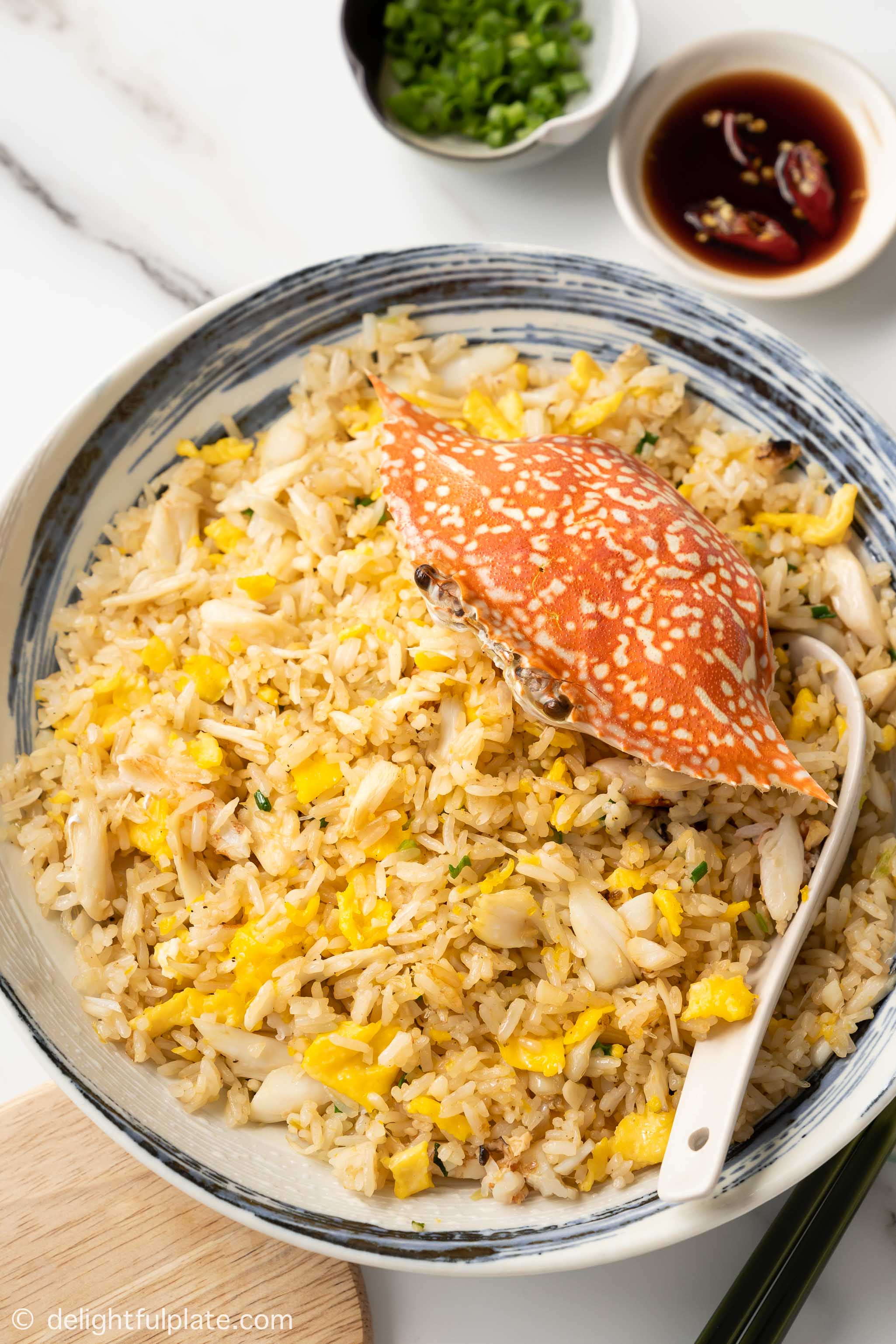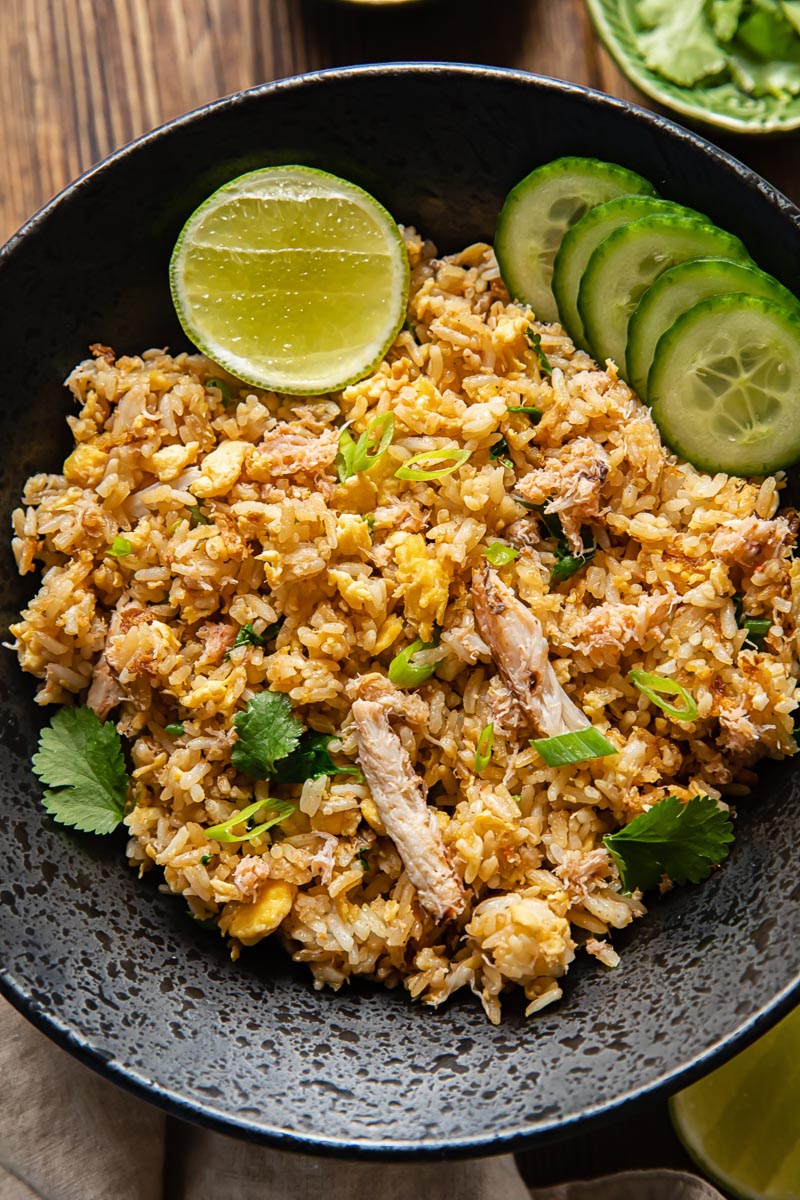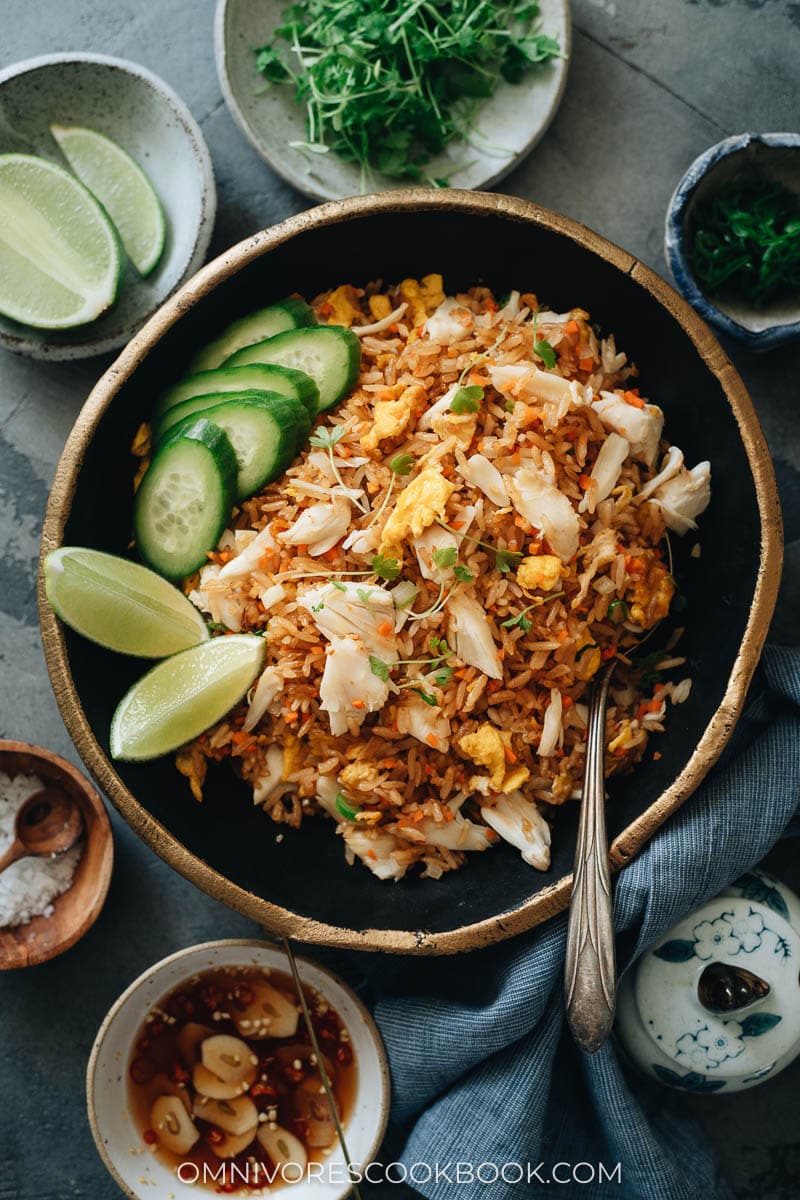Topic fried rice recipe japanese steakhouse: Discover the art of making authentic Japanese steakhouse-style fried rice, a dish that promises to delight your palate with its irresistible blend of flavors and textures.
Table of Content
- What are the ingredients for a Japanese steakhouse-style fried rice recipe?
- Essential Ingredients and Substitutes
- Step-by-Step Cooking Process
- Secrets to the Perfect Texture and Flavor
- Choosing the Right Rice and Preparing It
- Customizing Your Fried Rice with Additional Ingredients
- Serving Suggestions and Pairings
- YOUTUBE: Japanese Steakhouse Fried Rice
- Storing and Reheating Tips
- Common Mistakes to Avoid
- FAQs and Expert Answers
What are the ingredients for a Japanese steakhouse-style fried rice recipe?
Ingredients for a Japanese steakhouse-style fried rice recipe:
- 3 cups cooked and cooled rice
- 1 tablespoon grapeseed oil (or avocado oil)
- 1 tablespoon butter
- 2 large eggs, lightly beaten
- 1/4 cup diced onions
- 1/4 cup diced carrots
- 1/4 cup diced bell peppers
- 1/4 cup frozen peas
- 3 tablespoons soy sauce
- 1 tablespoon oyster sauce (optional)
- 1/2 teaspoon garlic powder
- 1/2 teaspoon ginger powder
- 1/4 teaspoon white pepper
- 2 green onions, chopped
- Sesame oil for drizzling (optional)
Note: Adjust the ingredient quantities according to your taste and preference.
READ MORE:
Essential Ingredients and Substitutes
The foundation of a delicious Japanese steakhouse fried rice lies in its ingredients. Here"s a comprehensive list of what you"ll need, along with possible substitutes to cater to different dietary needs or preferences:
- Rice: Use day-old, cooked short-grain rice for the best texture. Substitute with medium-grain or jasmine rice if short-grain is unavailable.
- Protein: Traditionally, chicken, shrimp, or tofu are used. Feel free to use any protein of your choice.
- Vegetables: Carrots, peas, and onions are staples. For a colorful twist, add bell peppers or corn.
- Eggs: Essential for adding richness and flavor. Vegans can omit this or use a scrambled tofu substitute.
- Soy Sauce: This provides the iconic umami flavor. Use tamari or coconut aminos for a gluten-free alternative.
- Sesame Oil: Adds a nutty aroma. Substitute with olive oil if necessary, though the flavor profile will change.
- Garlic and Ginger: Fresh is best for the most authentic flavors. Garlic and ginger powders can be used in a pinch.
- Green Onions: For garnishing and added freshness. Optional, but highly recommended.
- Butter: Gives the rice a rich, savory flavor, mirroring the Japanese steakhouse style. Use plant-based butter for a vegan option.
- Salt and Pepper: Adjust according to taste.
Feel free to adjust the quantities and ingredients according to your taste and dietary requirements. The beauty of fried rice is its versatility and adaptability to what you have on hand.
:max_bytes(150000):strip_icc()/237608-Hibachi-Style-Fried-Rice-ddmfs-4x3-321-1-5632564a5b874494bfbc0a1dfa737eb5.jpg)
Step-by-Step Cooking Process
- Prepare the rice: Cook rice according to package instructions and let it cool completely or use leftover rice for best results.
- Heat the skillet: Warm a large pan or wok over medium-high heat and add sesame oil for that authentic flavor.
- Sauté vegetables: Add diced onions, carrots, and peas to the pan, cooking until they"re soft.
- Move veggies to the side: Push the cooked vegetables to one side of the pan, making room to cook the eggs.
- Scramble the eggs: Crack eggs into the pan, scramble them until fully cooked, and then mix with the vegetables.
- Add rice and sauce: Incorporate the cooled rice into the pan, breaking any clumps. Drizzle soy sauce, a bit of sugar, and salt to taste, mixing everything thoroughly.
- Final touches: Add chopped green onions and toss the rice for another minute. For an extra flavor kick, a bit of garlic and ginger can be added with the vegetables.
- Serve hot: Remove from heat and serve immediately, garnishing with additional green onions or sesame seeds if desired.
This step-by-step process will help you create a flavorful and authentic Japanese steakhouse-style fried rice right in your kitchen, perfect for impressing family and friends.
Secrets to the Perfect Texture and Flavor
To achieve the iconic texture and flavor of Japanese steakhouse fried rice, several key techniques and ingredients are essential.
- Rice Preparation: Use day-old rice that has been refrigerated. This ensures the grains are firm and less likely to become mushy when fried.
- High Heat Cooking: Cook on high heat to mimic the powerful burners of a Japanese steakhouse. This technique helps to sear the ingredients quickly, locking in flavors and creating a slightly crispy texture.
- Seasoning: The right balance of soy sauce, sesame oil, and a touch of sugar enhances the umami flavor. Adjust these ingredients according to taste but be cautious with soy sauce to avoid overly salty rice.
- Butter: A small amount of butter added towards the end of cooking gives the rice a rich, slightly nutty flavor, distinguishing it from other fried rice variants.
- Garlic and Onion: Finely chopped garlic and onion sautéed until golden add depth and a foundation of flavor.
- Vegetables and Protein: Traditional ingredients include peas, carrots, egg, and shrimp or chicken. Ensure these are pre-cooked or sautéed separately before adding to the rice.
- Finishing Touch: A sprinkle of chopped green onions and a dash of sesame seeds add color and a fresh layer of taste.
Mastering these secrets will elevate your fried rice, making it a delightful dish that rivals your favorite Japanese steakhouse"s offering.
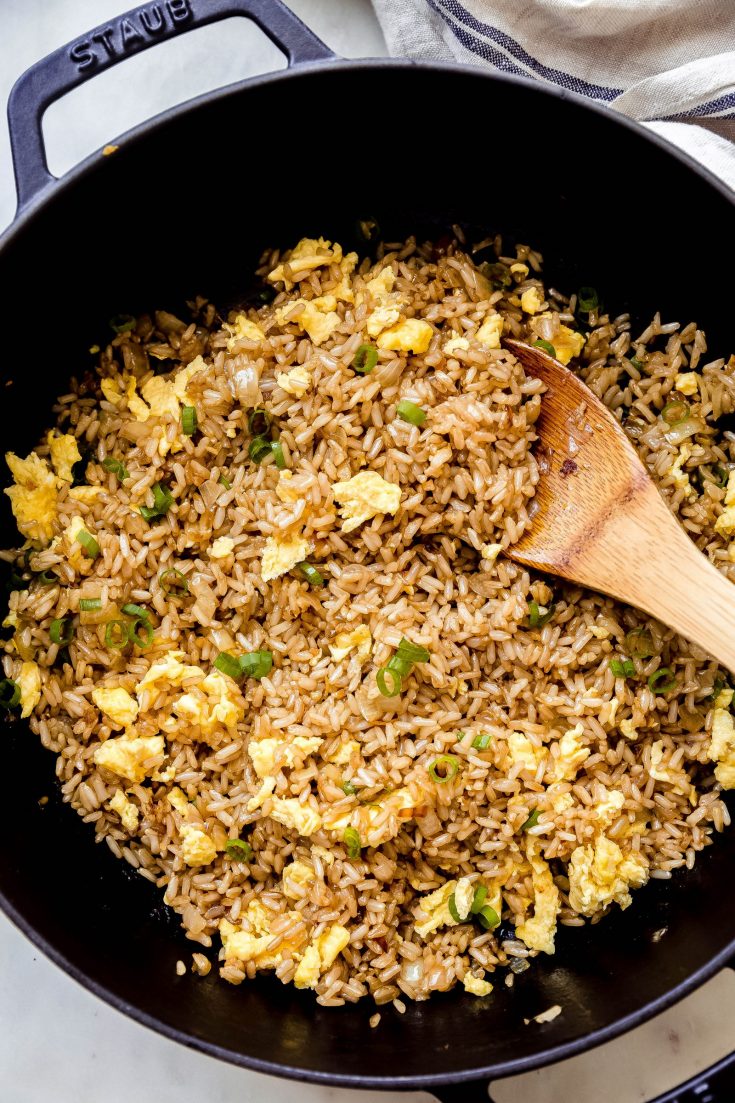
Choosing the Right Rice and Preparing It
The foundation of any great fried rice starts with selecting the right type of rice. For that authentic Japanese steakhouse flavor and texture, short-grain or medium-grain white rice is essential. These varieties provide the perfect stickiness and chewiness characteristic of Japanese fried rice.
- Begin by rinsing the rice under cold water until the water runs clear. This step is crucial for removing excess starch, which can make the rice too sticky.
- Cook the rice according to the package instructions, but aim for a slightly firmer texture by reducing the water slightly. Perfect fried rice needs slightly drier rice to prevent it from becoming mushy when stir-fried.
- Once cooked, spread the rice out on a tray and let it cool completely. For best results, refrigerate the rice for a few hours or overnight. Cold rice fries up better, leading to the ideal texture.
Preparation is key to achieving the distinct texture and flavor of Japanese steakhouse fried rice. By following these steps, you"ll ensure your fried rice has the perfect foundation.
Customizing Your Fried Rice with Additional Ingredients
One of the joys of making fried rice at home is the ability to customize it with a variety of ingredients to suit your taste. Japanese steakhouse fried rice is versatile, allowing for a mix of classic and innovative add-ins.
- Proteins: Add cooked, diced chicken, shrimp, beef, or tofu for a protein boost. Ensure these are cooked before adding to the rice.
- Vegetables: Traditional choices include peas, carrots, and onions, but feel free to incorporate bell peppers, broccoli, or edamame for extra color and nutrition.
- Eggs: Scramble eggs separately and then fold them into the rice for that authentic texture and flavor.
- Seasonings: Soy sauce, sesame oil, and a touch of oyster sauce can elevate the flavor. Adjust these according to your preference for a more personalized taste.
- Garnishes: Finish with chopped green onions, sesame seeds, or pickled ginger for an added layer of flavor and texture.
By experimenting with different combinations of ingredients, you can create a dish that"s uniquely yours while still paying homage to the classic Japanese steakhouse style.
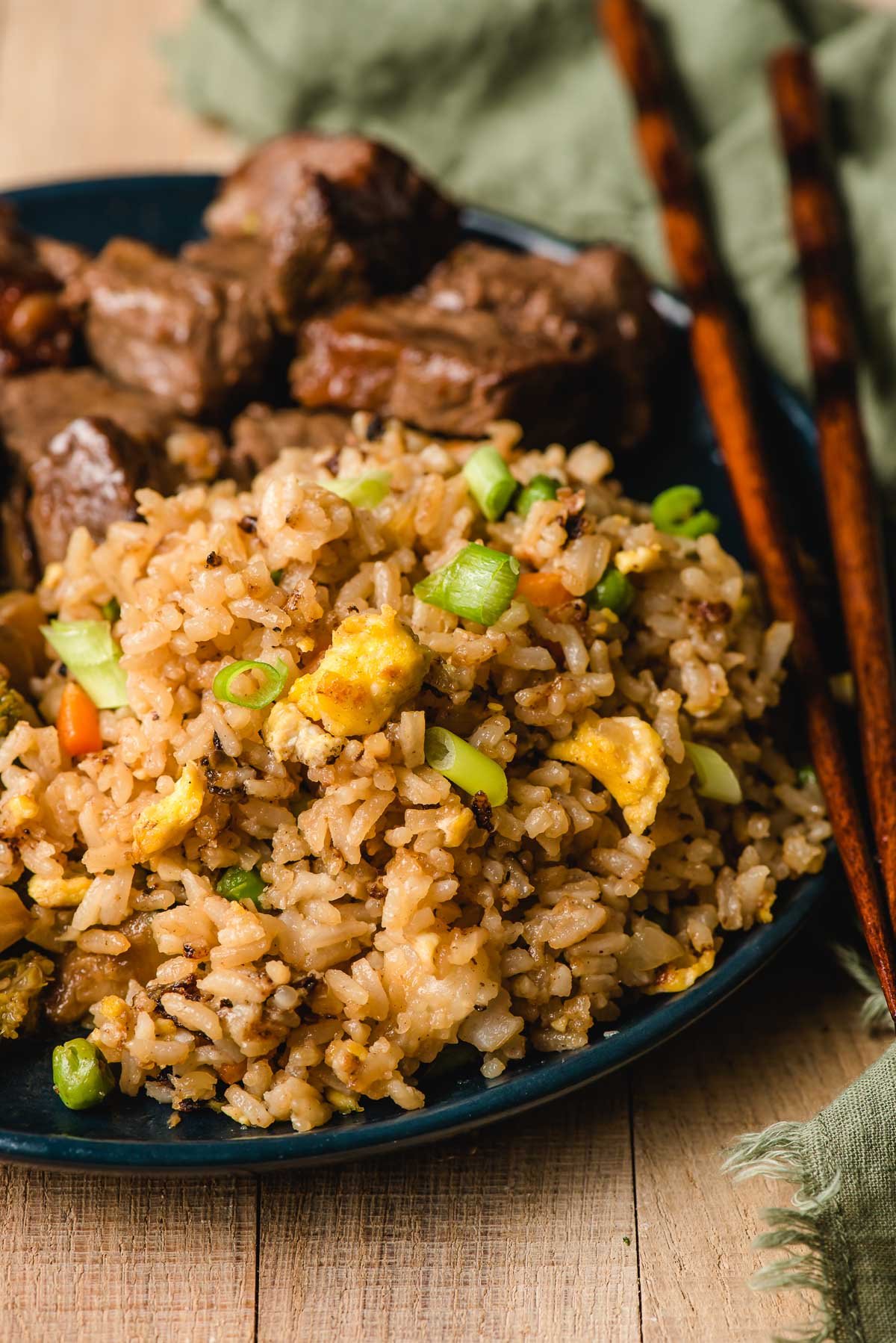
Serving Suggestions and Pairings
Japanese steakhouse fried rice is a versatile dish that can be served as a main course or as a side dish. Here are some serving suggestions and pairings to elevate your fried rice experience:
- Pair with grilled or stir-fried vegetables such as bell peppers, broccoli, and zucchini for a balanced meal.
- Serve alongside protein options like teriyaki chicken, grilled shrimp, or tofu for a hearty dish.
- Top with a fried egg, sliced green onions, and sesame seeds for added flavor and texture.
- For a traditional Japanese steakhouse experience, serve with miso soup, a side of pickled ginger, and a light salad dressed with ginger dressing.
- Pair with sake or a light beer to complement the rich flavors of the fried rice.
Whether you"re serving it as a standalone dish or as part of a larger feast, these pairings will ensure your fried rice is a hit at any dining table.
Japanese Steakhouse Fried Rice
Experience the ultimate dining indulgence at our renowned steakhouse. Savor the mouthwatering flavors and tender cuts of perfectly grilled steak, accompanied by a selection of exquisite sides and a welcoming ambiance that promises an unforgettable gourmet journey.
Hibachi Kobe Steakhouse Fried Rice
Prepare to be amazed by the captivating performance of our talented hibachi chefs. Watch as their expert skills and precision turn ordinary ingredients into a spectacle of sizzling delights right before your eyes. Get ready to enjoy an interactive dining experience that combines outstanding culinary expertise with entertainment like no other.
Storing and Reheating Tips
Properly storing and reheating your Japanese steakhouse fried rice can make all the difference in enjoying it a second time. Here"s how to keep it tasting fresh:
- Storing: Allow the fried rice to cool to room temperature before storing it to prevent bacterial growth. Transfer it to an airtight container and refrigerate for up to 3 days. For longer storage, freeze it in a sealed container for up to 2 months.
- Reheating: To retain the rice"s texture, reheat it on the stove over medium heat with a little bit of water or vegetable oil. Stir frequently to prevent it from sticking to the pan. If you"re in a hurry, microwaving it with a damp paper towel on top can also revive its moisture and warmth.
By following these tips, your fried rice will remain delicious and safe to eat, replicating the satisfying experience of your favorite Japanese steakhouse meal.
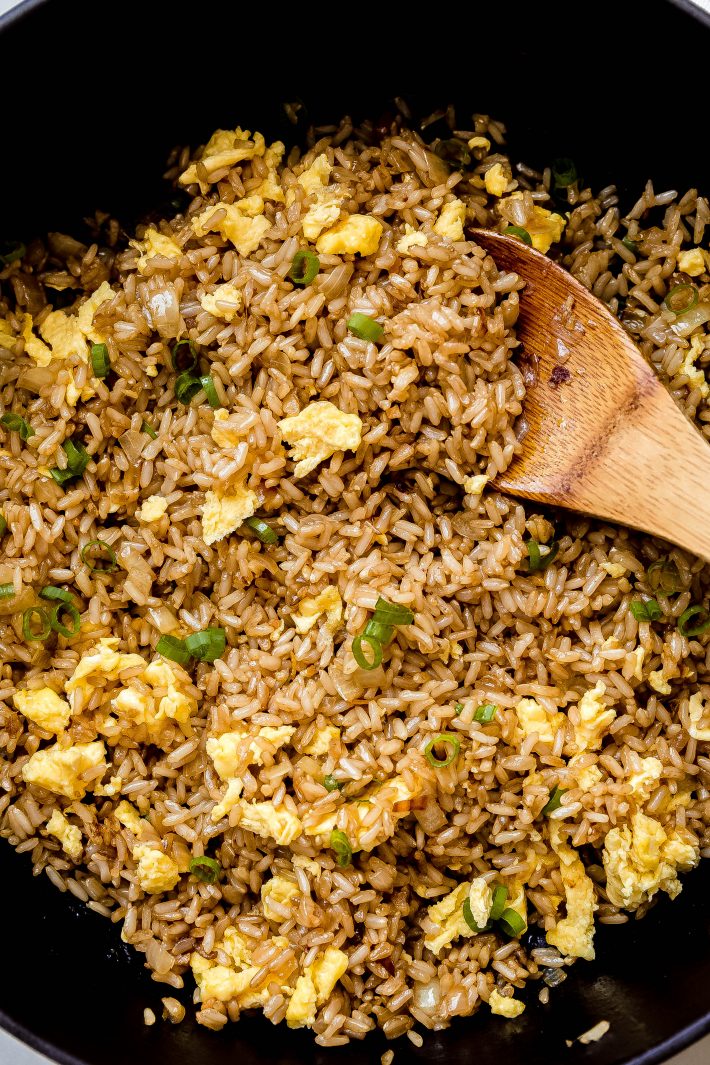
Common Mistakes to Avoid
Achieving the perfect Japanese steakhouse fried rice is all about technique and attention to detail. Avoid these common pitfalls to ensure your dish is a success:
- Using Freshly Cooked Rice: Fresh rice can result in a mushy texture. Always use rice that has been cooled or, ideally, refrigerated overnight to ensure it fries up nicely.
- Overcrowding the Pan: Give your rice room to fry by cooking in batches if necessary. Overcrowding leads to steaming rather than frying, preventing that coveted crispy texture.
- Skimping on the Heat: High heat is crucial for that signature sear and flavor. Make sure your pan is hot before adding your ingredients.
- Constant Stirring: Allow the rice to sit undisturbed for a bit after adding it to the pan. This helps create those delicious crispy bits.
- Ignoring Seasonings: Simple seasonings like soy sauce, salt, and pepper are key. Add them judiciously to enhance flavor without overpowering the delicate balance.
By steering clear of these mistakes, you"ll be well on your way to making a fried rice that rivals your favorite Japanese steakhouse"s.
READ MORE:
FAQs and Expert Answers
- Can I use brown rice instead of white rice? Yes, you can use brown rice for a healthier option, though it will alter the traditional texture and flavor. Ensure it"s cooked and cooled properly to prevent it from becoming mushy when fried.
- What oil should I use for frying? Traditional Japanese steakhouse fried rice is often made with a combination of sesame oil and vegetable oil. Sesame oil adds a distinct flavor, while vegetable oil has a higher smoke point for frying.
- How do I make my fried rice more flavorful? Don"t skimp on the seasonings. Soy sauce, oyster sauce, and a bit of sugar can enhance the umami. Garlic, ginger, and scallions also add depth. Adjust these ingredients to taste.
- Can I add meat or seafood to my fried rice? Absolutely! Chicken, shrimp, beef, or pork can be added. Make sure they"re cooked before adding them to the rice. Egg is also a common addition, scrambled into the rice as it cooks.
- How do I prevent my fried rice from becoming soggy? Use rice that has been cooked and then cooled, preferably left in the refrigerator overnight. This dries out the rice, making it ideal for frying without becoming soggy.
Embark on a culinary adventure with this Japanese steakhouse fried rice recipe, where every bite brings a fusion of flavors. Perfect for any occasion, this dish promises to leave you and your guests craving for more.


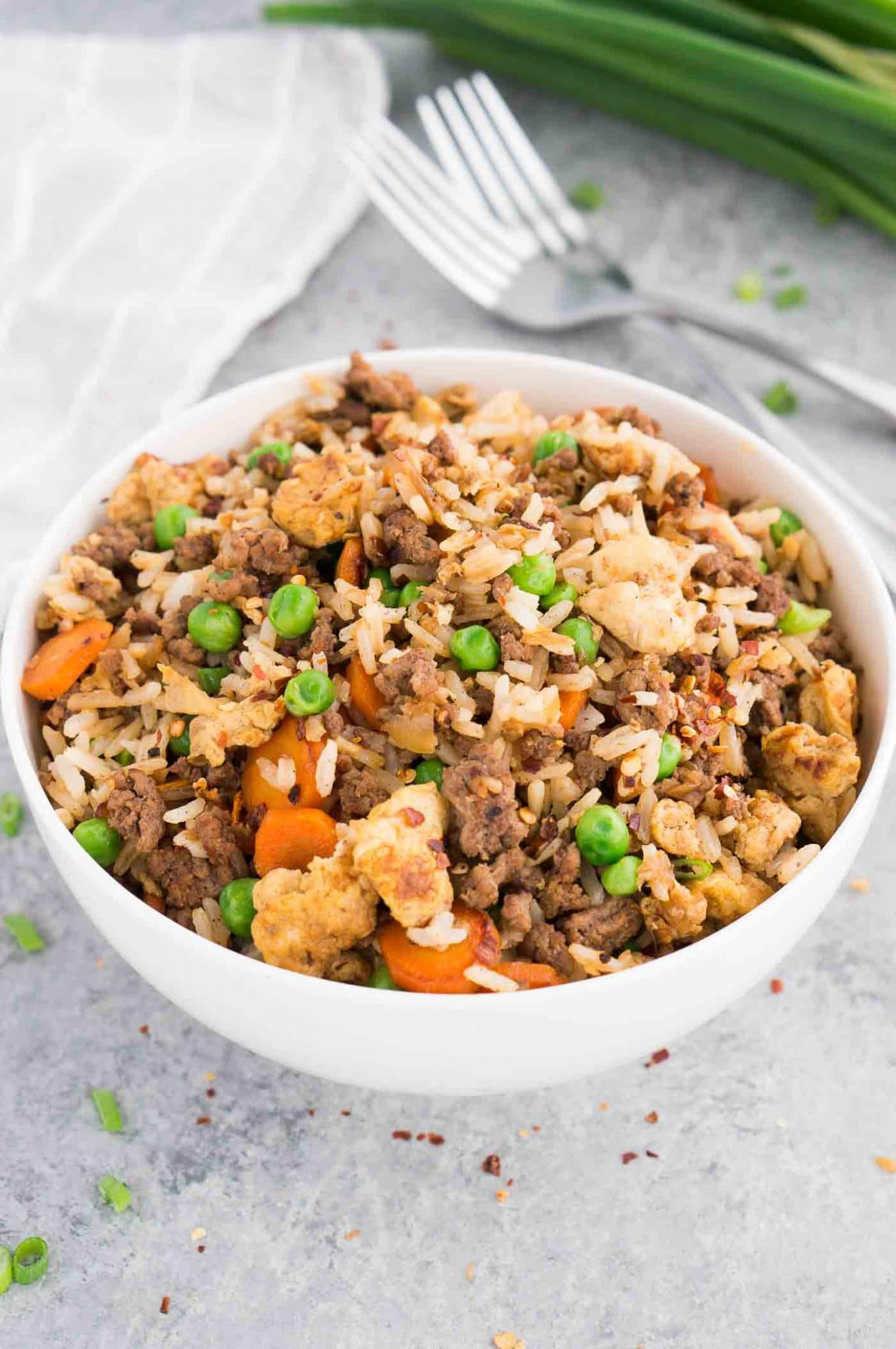

:max_bytes(150000):strip_icc()/easy-vegetable-fried-rice-recipe-hero-2-fed2a62b8bce4c51b945d9c24c2edb68.jpg)

